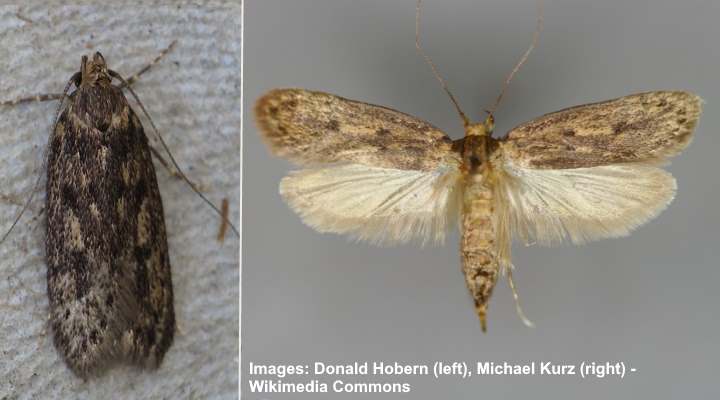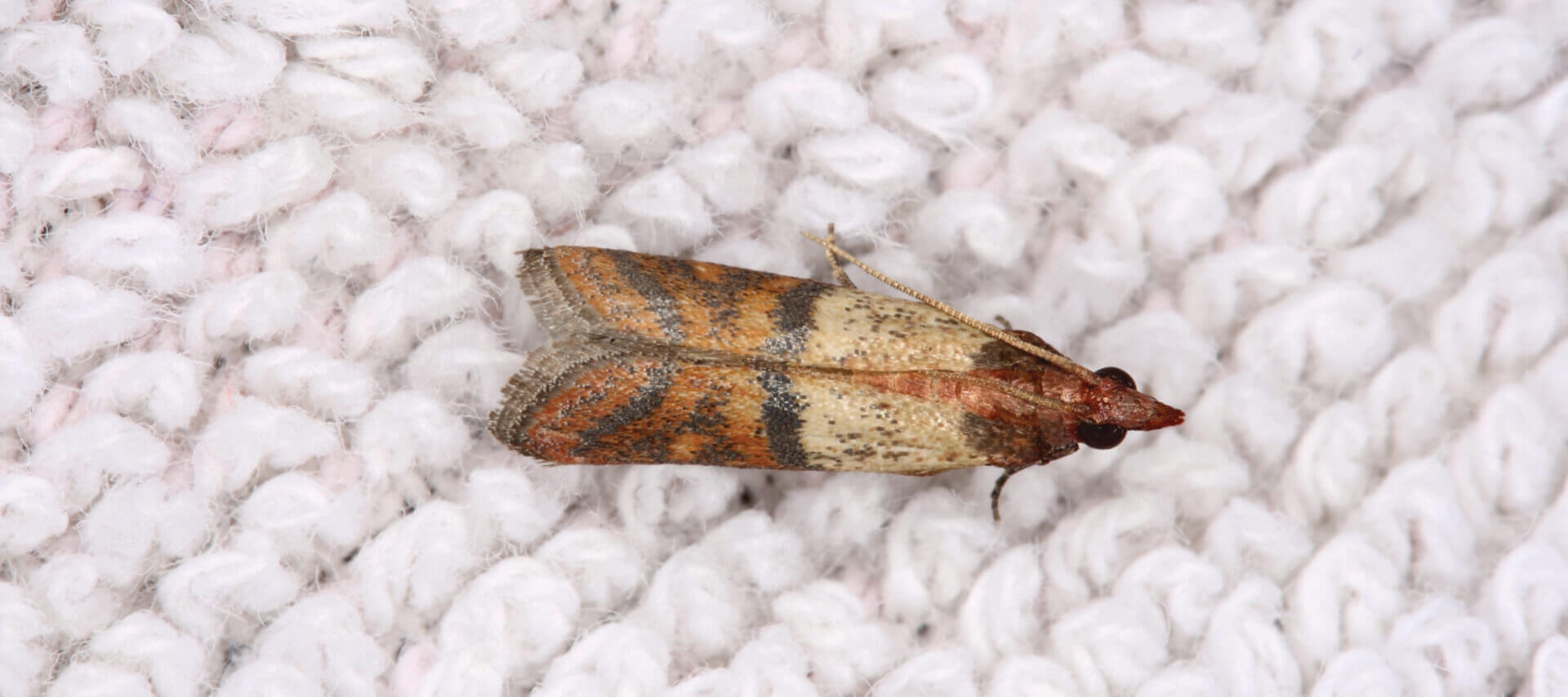Table Of Content
They are small flying insects that infest or contaminate stored pantry goods such as grain, cereal, flour, and other dry food. They are also known as grain moths or Indian meal moths because they commonly infest powdered Indian corn or cornmeal in America. These pests enter the home via newly-purchased clothes or bird, rodent, and other animal nests made inside attics, crawl spaces, or nearby trees, add the experts at Orkin.
The Brown House Moth - A Homeowners Guide

For instance, Brown House Moth larvae that feast on grains will have a different color than those eating a red wool sweater. If you see moths flying around in your house, they probably aren't clothes moths—you have a pantry moth problem. These small pests, which infest flour and grains, have bronze or gray wings and a yellow-gray upper body. Their most defining feature is the black band that circles around the wings' upper and lower segments. Typical of all house moths, the larvae of case-bearing clothes moths are the insects that cause the damage.
Things People Believe About Mosquitoes That Aren’t True
It’s common to experience moths in the house if there is a lot of movement in and out of the structure. The insects may slip in easily through the door, or an open window. In some instances, moths get in the house because they are simply attracted to light. Moths may also be attracted to food or clothing within the home.
Caterpillar
Specifically, many of these moths are great for pollinating gardens and have stunning aesthetic features. If you see these moths, just leave them to it; they definitely won’t hurt your house. Also, be sure to inspect any used furniture, rugs, fabrics, or secondhand materials for moth larvae or eggs before carrying them into your home. If you suspect that an item may be harboring moth eggs, seal it in a trash bag and freeze it for 72 hours to kill eggs and larvae. Keep in mind that there are over 160,000 different species of moths in the world.
Do Brown House Moths bite?
With Brown House Moth identification, the main things to keep in mind are appearance and location. These moths are brown, brownish-gray, or bronze-brown in colour and are weak flyers. The ravenous larvae of these moths can be found eating keratin or cereal proteins. This may include wool, leather, fur, grains, or other exposed dry foods.
The Life Cycle of Brown House Moths: From Eggs to Adults
Similarly, ensure that crumbs and other small bits of grains don’t accumulate in kitchen cabinets. The next step to eliminate pantry moths is to wipe down the inside of all kitchen cabinets and units where you store food. First, use the vacuum cleaner to get rid of all debris and microscopic eggs.
Miller moth mania: What you need to know about the migration as it hits the Front Range - Denver 7 Colorado News
Miller moth mania: What you need to know about the migration as it hits the Front Range.
Posted: Fri, 12 May 2023 07:00:00 GMT [source]
Pestilent moth species like Clothes Moths and Pantry Moths can be a serious problem and wreak havoc in your abode. In their larval stages, Pantry Moths can eat through all sorts of dry goods while Clothes Moths will happily burrow through fine fabrics and annihilate your favorite outfits. Possibly the rarest moth on the continent, the cecropia moth is North America’s largest, with a wingspan of up to 7 inches. This nocturnal species is found in the hardwood forests east of the Rocky Mountains in Canada and the United States. Like many other moths, cecropia moths do not feed as adults, but simply emerge from their cocoons in the early summer, mate, and die within two or three weeks.
In the larval phase, sod webworm moths eat grass, sod, and other low-growing plants. The Brown House Moth, or, Hofmannophilam pseudospretella, is in the class Oecophoridae. This common household pest is thought to have originated in Asia.
This may include wool, silk, cashmere, leather, feathers, and more. The Brown House Moth (Hofmannophila pseudopretella) is thought to have originated in Asia. While falling into the pantry moth category, Brown House Moths will be found throughout the home. An adult Brown House Moth is about 8-14mm long and has a 15-26mm wide wingspan.
These moths lay eggs near what they deem to be delicious food sources. The eggs hatch into hungry larvae that begin eating their way through all edible materials nearby. Unfortunately, to the Clothes Moth Larva, a palatable food source could be essentially any natural, animal-based fibers, or biodegradable fabric material. This means that Clothes Moth Larvae will eat through textiles such as silk, fur, wool, cotton, cashmere, or even tougher materials such as leather and suede. They hide in and infest items like clothing and upholstery made of animal materials. Adult moths won't actually eat your garments, but their larvae feed on the natural clothing fibers in materials like wool, which contain keratin, the Orkin experts say.

Although you might think your home is safe from the mayhem of moths, there are many varieties that can infiltrate your home without you noticing. The Brown House Moth is one of those pests you want to be vigilant about. Then it’s time to learn more about this particular species and how to get rid of them.
Not to mention, these moths can show up first in the 10s, then 100s, then 1000s over the course of just a few days in the warmer months of the year. During mating and migration, they serve as a critical food source for birds, bats, and many other small mammals. Although it can be shocking to suddenly get visited by an army of large brown moths, they aren’t damaging to clothes, pantry items, or household goods. There are many different types of pantry moths and they can be found all over the world including most parts of North America, Europe, Asia, and Canada. These types of house moths love to get into pantry spaces or any other spots where you happen to be storing food. In particular, they like closets, larders, storerooms, cupboards, drawers, and of course, quiet pantries where they can lay their eggs.
It is not at all unusual for homeowners to observe these insects flocking in large numbers around outdoor light fixtures or windows during the nighttime hours. However, a surge of moths in your house could also mean that a generation of moths have just reached maturity and are now emerging to mate and lay eggs. Dealing with the presence of White-Shouldered House Moths within residential and commercial spaces is a common challenge faced by many individuals. Understanding their impact and implementing effective pest control measures is essential. After several molts, the larvae enter the pupal stage, where they undergo a transformation inside their protective cases. During this stage, they undergo metamorphosis, developing into adult moths.

No comments:
Post a Comment